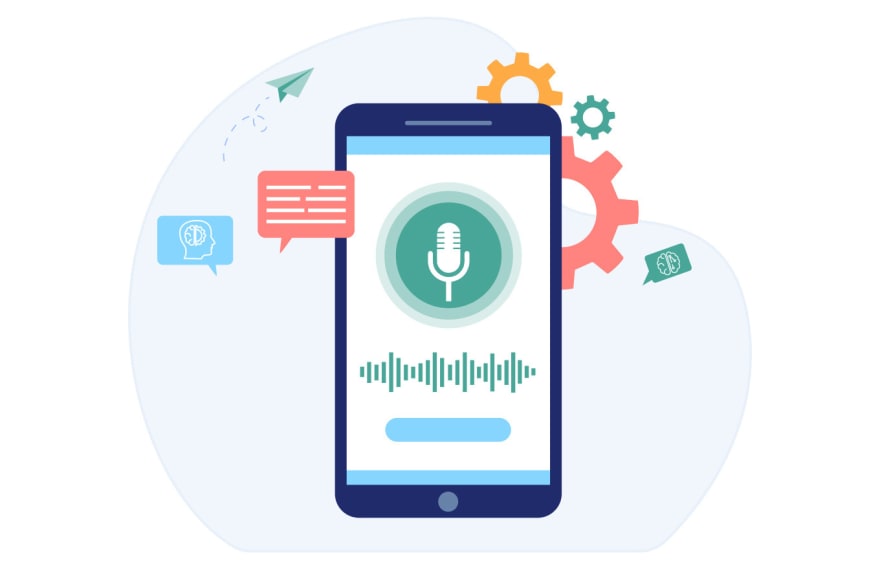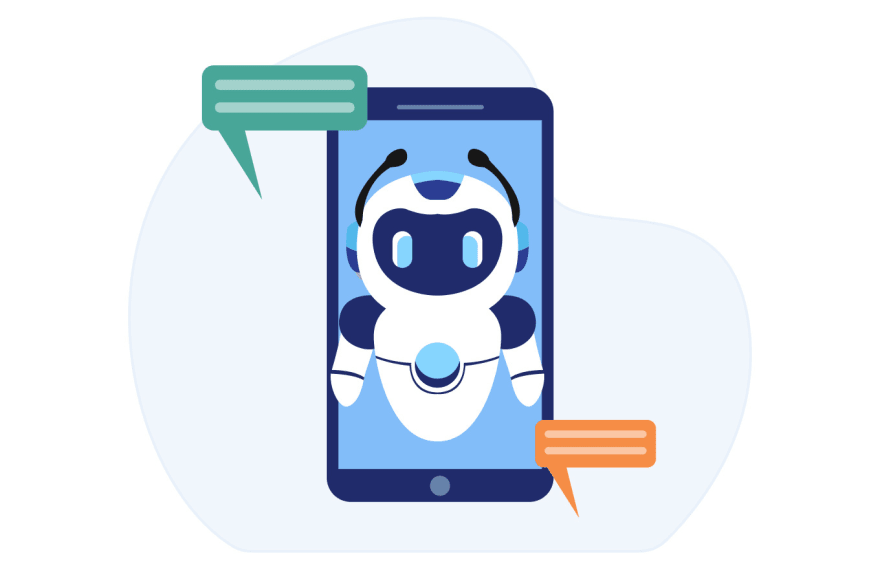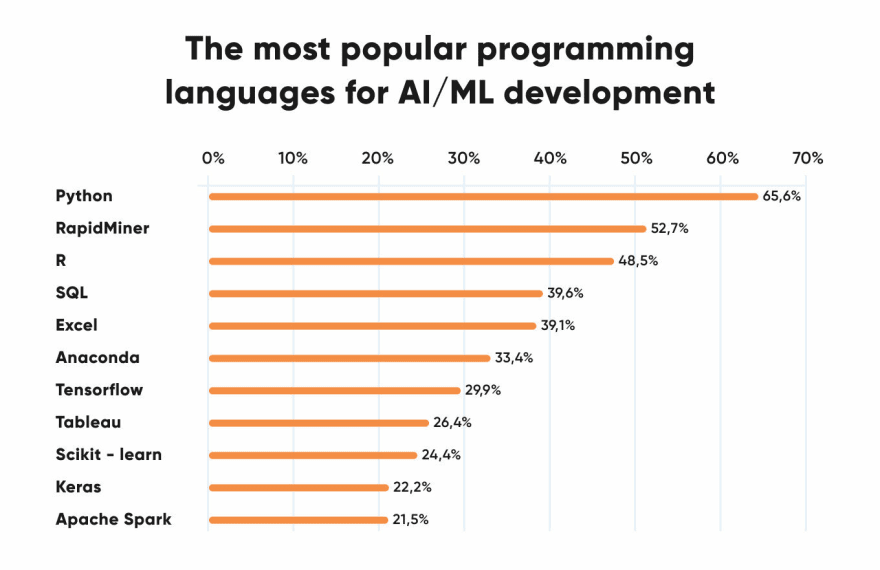The original article was published by SoftFormance https://www.softformance.com/blog/python-for-artificial-intelligence/
Around 10 years ago, you had to hire software developers to build even the simplest portfolio websites and marketing pages.
Nowadays, you can handle all these tasks with online CMS platforms, such as WordPress and Wix.
Around 5 years ago, you had to hire a team of software developers to build simple marketplaces and SaaS applications.
Nowadays, such tasks can be almost completely handled with builders, such as Sharetribe, and no-code platforms.
New technologies appear at an ever-increasing pace, which opens new software development horizons.
It is challenging to find a new technology that brings as many promises as Artificial Intelligence (AI).
Most probably, you’ve also heard about it and its potential. AI became known to a broad audience in the 1980s after the release of The Terminator. The film presents an advanced AI network, called Skynet, which becomes so powerful and independent that it enslaves humankind.
Fortunately, in reality, AI is far from being as threatening as this legendary action movie shows us.
It brings some great opportunities for developing new technologies that create other technologies.
We may expect that AI and Machine Learning tools will create SaaS, social media, and business software in the near future.
Meanwhile, the developers will be focused on creating more sophisticated AI tools and applications that will be responsible for creating simpler software.
Everything moves in the direction where software becomes smarter and more complex. It is no longer only a tool for the automation of routine processes, but something much bigger.
At least, AI technologies start analyzing their responsibilities independently, creating processes from scratch, and, surely, automating them.
Do you have questions on why so many digitized businesses admire the potential of AI/ML technologies? Then check out the image below.

Doesn’t it sound inspiring? Probably, you are thinking of a new startup or have an existing app that doesn’t include AI/ML components, it’s just about time to think of it. After all, such technologies may be vital for your product’s market competitiveness.
This article will come in handy. Here we will tell you about how to implement AI/ML the right way. We will also tell you why Python (our favorite programming language) is your panacea for the most efficient AI/ML software development.
Why do you need AI/ML?
Before we dive into the topic, let’s briefly clarify what AI is and how you can get an ace up your sleeve with some quality AI/Ml algorithms.
Speaking in more official words, an AI is when machines simulate human intelligence processes, which gives them possibilities of independent decision-making.
Meanwhile, ML is the ability of such machines to use the received data for independent learning and self-development.
This process is very much similar to the school education of a child except for the fact that the capacities of machines are still more limited than the ones of a human mind.
Probably, the future will bring us universal AI technologies that will prevail in all possible activities. However, currently, it goes more about the practical implementation of such machines that are tailored to specific domains of human activity.
That’s the point when we approach the question of the benefits that AI and ML can bring to digitized businesses.

Surely, you’ve heard a lot about the value of automation in the technology domain. Well, AI and ML bring this automation to another level.
With such innovations, your software system will not only automate your processes but also create its own processes independently.
It is a perfect way to minimize human effort while completing tasks with maximum preciseness.
Need more practical examples?
Here are some of them:
A healthcare application that analyzes patient symptoms to deliver relevant suggestions on care.
A logistics automation software that processes great loads of data to come up with the most efficient schedule for drivers.
An automotive AI platform that uses ML algorithms to come up with state-of-the-art vehicle designs.
An image recognition app used for document parsing.
An AI-powered chatbot that answers the question of a firm’s clients without any human involvement. And, what is even more important, it does it the smart way.
A smart healthcare assistant that uses AI and ML algorithms to predict adverse drug events.
A cruise control tool that automatically maintains the vehicle’s speed.
An insurance app that organizes and systematizes all the claims.
An AI-powered music studio that optimizes the recordings to provide the best sound quality.
A design tool that uses the advanced AI/ML algorithms to develop the most attractive interior designs.
An AI-powered analytical tool that automates data collection and analysis to make the most precise business estimations.
A tourist helperl that uses AI to find the most attractive booking and travel opportunities for its users.
This list may go way further. These are just a few examples showing how AI and ML algorithms can make your software rock.
Surely, AI is not only about general benefits, but also about specific features and challenges you should fight to develop a truly efficient AI system.
What kind of technical challenges do we face while developing AI/ML software?
If your team develops an AI/ML app, it will usually face some significant problems down the road.
Let’s consider the most frequent technical challenges here.
Image/video recognition
Detecting specific objects or persons on images or videos may be important for many industries, ranging from security to video editing.

Surely, you should bend over backwards to implement such features. Fortunately, AI/ML tools, such as Vision AI, already provide excellent algorithms for video processing and recognition.
Voice recognition
It is one hard-to-implement feature that brings some excellent value to ordinary Google clients.
AI-powered voice recognition helps Google understand voice requests and provide users with search results and Google services.

Text analysis
Consider the example of Grammarly.
This text-checking platform applies ML learning algorithms to improve itself and its ability to detect mistakes in various texts. Surely, this AI-powered feature may go far beyond a simple analysis of grammar in the text.
But implementing it in your application may be a great challenge.

Autopilot
Here it goes about something way more special.
How about an AI-powered smart driver that creates a perfect route and drives throughout the entire ride?
Such technologies are already a reality. For example, they are widely applied in Tesla vehicles. Meanwhile, implementing such “magic” is definitely not the easiest task.

Robot intelligence
An intelligent robot is, literally, the embodiment of AI technologies. In recent years, such machines are applied in many spheres. For example, even the U.S. police use robotic dogs for dangerous operations, which allows them to decrease the threat of human casualties. Still, you should pass through a vicious cycle of tech challenges to make your robot really intelligent.

Let me say it one more time, this list of AI/ML features goes far beyond these examples. These are just some of the most popular problems present in 90% of ML/AI software.
Now, the next question is:
How Python solves these AI/ML Problems?
Python is broadly known as the king of programming languages when it comes to AI and ML. Statistics on developers’ preferences vividly show it.

We at SoftFormance broadly apply it for delivering the most advanced AI/ML solutions.
What makes this programming language so special?
Here are some Python features that are especially valuable for Python AI and ML tasks.
Prebuilt libraries and frameworks
There are numerous highly-efficient libraries that enable us to employ the full potential of Python for AI/ML software development. We strongly recommend you rely on Django as the most reliable Python development framework. You may read one of our recent materials to know more about this technology and its benefits.
Besides, it is impossible not to mention the value of Python development libraries. These are the collections of basic tools or items required for efficient software development.
Building an application without libraries is like trying to invent tools for building a house instead of using the existing toolset.
Python AI/ML development is rich for such tools because there are many libraries enabling you to access, handle, and transform data.
Here are some Python Ai and ML libraries that prove to be the most efficient:
Scikit-learn is a library that provides for basic ML algorithms, such as clustering, regression, classification, and many more.
Keras facilitates deep learning, as it enables fast calculations and prototyping.
Pandas comes in handy when it goes about high-level data structures and analysis. It gathers, merges, and filters data.
Caffe helps with deep learning. It provides switching between the CPUs and may process 60+ million images per day.
TensorFlow helps with deep learning. It sets up, trains, and uses data-loaded neural networks.
Matplotlib helps create 2D plots, histograms, charts, and other visualizations.
NLTK is the best solution when it comes to working with natural language recognition, processing, and computational linguistics.
PyBrain helps in developing neural networks, as well as establishing unsupervised and reinforcement learning.
StatsModels is a solution for building statistical algorithms and exploring data.
Platform independence
Finding a user-friendly and multifunctional programming language for AI/ML development is already a great thing. But what will you do if you find out that your solution doesn’t integrate with the required operating systems?
Therefore, I strongly recommend all developers prioritize the platform independence of their solutions.
Fortunately, Python doesn’t bring any problems with this.
You can run Python for AI/ML development on any platform, including Windows, macOS, Unix, Linux, and many more.
What is also important, is that you shouldn’t apply any Python interpreter for such purposes. The changes in the Python codebase implemented across various platforms are rather insignificant and will not require too much effort.
Mind that there are also tools, such as PyInstaller, that help developers prepare the code for running on different platforms.
With all such features, Python provides excellent versatility. This means greater efficiency and productivity, especially when it comes to cross-platform development.
Rapid development
AI and ML are here to stay, but it doesn’t mean that you have very much time for implementing your ideas.
Just like always in the IT domain, time is money.
To deliver your revolutionary AI/ML solutions to the market as soon as possible, you have to be as fast as possible.
We’ve already discussed versatility and a rich ecosystem as important factors for rapid Python software development. Apart from this, Python brings you the speed of development with some additional benefits.
First of all, it is one of the most flexible programming languages.
Just like literature writers, developers may have their programming styles. The more comfortable they are with the code, the faster they will deliver the result.
A great benefit of Python is that developers can adjust it to their specific needs and software development styles.
Developers are free to improvise and learn new programming styles, which is especially comfortable in the case of Python.
This technology is known for its ease of learning. Some of our most experienced Python developers say that Python, unlike any other software development technology, encourages them to improve their skills and learn new coding tricks.
All such factors bring greater development efficiency, which means that you may deliver your AI/ML-powered product to the market in much shorter terms.
Community support
Just like any other people, software developers feel much more convenient and comfortable when they are not alone. It goes about community support as a way to get help in challenging situations or, at least, find useful tips or tools for some challenges.
Well, community support is definitely not the problem for Python AI developers.
It is an open-source language that provides a bunch of resources that help programmers of different levels.
Once a developer encounters any issues with Python software development, he or she may easily ask other programmers or tech specialists for help.
There are lots of Python development documents, tips, solutions, and tools available online.
Most of them are free, so there will be no problem that cannot be solved.
We may compare AI/ML software development to a car ride. In this case, feel secure that building such an app with Python will not become an untrodden path for you. Instead, you may view it as a busy highway full of car services, as other drivers are ready to help.
And that’s what makes your trip much more joyful and secure, isn’t it?
Here are some great AI/ML and Python learning and communication resources that might be useful:
Magenta: One of the biggest Python libraries and research projects.
Institute for Artificial Intelligence: An educational program that promotes AI/ML with the help of various programming technologies, including Python.
Reddit » Python: The largest Reddit community dedicated to Python and its technology potential.
Coursera: One of the world’s most famous sources of educational knowledge provides a comprehensive course helping you to learn the basics of Python AI development.
Python Forum: an official forum for Python.
Reddit » r/artificial: A large Reddit forum dedicated to the development of artificial intelligence and to Python AI development in particular.
Simple code
One more attractive bonus of Python is its simple and consistent code.
AI and ML are already very complex technologies that may be extremely challenging to implement. If you have to solve these issues with a sophisticated programming language, the challenge grows to cosmic proportions.
Imagine studying an extremely complex book on something like quantum physics with archaic English constructions.
Surely, this may be a harrowing experience.
So, if you work on solving AI/ML issues, you need, at least, your programming language to be simple.
That’s exactly the case with Python. We admire it for its simplicity and intuitive syntax. Understandable keywords, intuitive constructs, and a moderate footprint – all these factors make Python one of the most developer-friendly programming languages.
Add advanced collaborative implementation functionalities, a number of highly-efficient frameworks, and a significant archive of libraries, and you will get one of the most convenient in-use programming languages ever.
Besides, Python is a general-purpose language. It provides functionalities for doing a set of complex machine learning tasks. You may easily tailor such a feature to your AI/ML development needs.
8 examples of AI/ML software built with Python
Now that you know more about Python and its benefits for developing next-gen artificial intelligence applications, let’s proceed with some specific examples of Python apps.
- AI/ML search and communication tool It is challenging to find a person who has never heard of Siri.
This AI-powered search and virtual communication engine powered by Apple has been developed with Python.
Siri is one of those advanced AI tools that not only help you find useful information but can also handle a conversation and help you cope with many tasks.
And, guess what? Siri constantly improves with its advanced ML algorithms.
- AI/ML for linguistics Here it goes about ELSA Speak. This AI-powered application helps English learners all around the world.
Artificial intelligence algorithms developed with Python provide users with feedback to enhance their learning.
With more than 3.6 million users in 101 countries, ELSA Speak is currently one of the most popular and rapidly developing platforms for language learning and linguistics.
- AI/ML for emotional health management AI/ML technologies built with Python have reached the level when they can handle even the most complex conversations.
Youper is a perfect example of such a solution.
This app helps users manage their emotional health. Once a person encounters any psychological issues, he or she may have a conversation with Youper.
The AI algorithms enable Youper to adapt to the needs of specific users and act as a virtual psychologist.
As a result, a user can understand oneself better and track their mood.
- AI/ML for the transportation industry Uber, one of the world’s biggest transportation companies, is known for its strong reliance on the potential of Python.
In addition, Uber has launched UberAI, an AI-powered analytical platform aimed at improving its services.
This product is more internal-use-oriented, as it analyzes loads of data on drives and customer satisfaction with Uber’s services.
The goal is to provide the users of Uber with a better customer experience.
- AI/ML for expenses management Here we can mention the example of Fyle. This application for expense management uses highly-efficient AI algorithms for efficient analytics.
It analyses user expenses, retrieves data from checks, and tracks corporate cards for the most efficient expense management.
The product is primarily oriented on business owners who want to optimize their company cost management.
What makes it really important in the context of this article is that Fyle has been developed with the help of Python.
- AI/ML for fintech We had the experience of developing a fintech application powered by AI/ML.
Our team employed the potential of Python to develop an invoice parsing platform for PinWaste, a large recycling automation company.
The programming language has been perfectly integrated with Tesseract OCR neural network engine that ensured character recognition.
It thoroughly reviews the text and analyses text meta blocks to retrieve the most valuable information from the invoices.

As a result of such automation, the client has much more time for their essential business processes.
- AI/ML for marketing software Our team also has some notable experience in developing a social media marketing automation platform with integrated artificial intelligence algorithms.
Our solution is BackChat marketing automation SaaS for Facebook messenger.
Python was the essential programming solution for building a user-friendly and feature-packed platform.
What makes this solution even more important in the context of this article is that we integrated Dialogflow AI components into the application.
This technology goes far beyond ordinary chatbots because it provides AI-powered responses to the question of Facebook subscribers.
- AI/ML for education software Our team developed a student dashboard that builds a custom learning methodology on the fly for each student.
Python enabled us to integrate AI-powered processes that analyze the performance of a specific student and develop custom educational programs that fit the specific needs of this person.
As a result, learners receive a schedule, an educational approach, and lessons that perfectly fit their needs or demands.
No more boring educational curricula that ignore the students’ individualities.

Instead, the AI and ML algorithms of our solution help educators find an approach even to the most struggling learners.
Wrapping up
So, these were just some of the most valuable facts on AI/ML software and Python as the best programming language for building such apps.
Would you like to explore the entire topic? Well, this would take a series of books, and there would still remain many questions and blank spots.
We tried to gather some of the most practically relevant insights in this article. Hope that it was really useful and interesting.
Probably, it may even inspire you to start your artificial intelligence python development or make your existing app smarter with some AI/ML component.
Already got an idea? We’re ready to help you make it a reality!
With over 250 successfully completed projects, we certainly know how to deliver state-of-the-art apps that fulfill your most ambitious ideas.
And, for sure, we’re ready to employ our strong Python expertise to help you deliver an app that will be extremely promising but much less dangerous than Skynet!




Top comments (1)
Python is considered a perfect solution for AI/ML software development for several reasons:
Easy to Learn: Python has a simple and straightforward syntax, making it easy to learn and use. Its readability and simplicity allow developers to quickly build and test their ideas.
Rich Set of Libraries: Python has a vast collection of libraries and frameworks that make it easy to develop and deploy AI/ML models. Some of the popular libraries include NumPy, Pandas, Scikit-Learn, Tensorflow, and PyTorch.
Flexibility: Python is a flexible language that can run on different operating systems and platforms. This flexibility allows developers to create AI/ML models that can be deployed on various devices and systems.
Large Community Support: Python has a vast and active community of developers and users. This community provides excellent support through online forums, tutorials, and documentation.
Performance: Python is an interpreted language, which means it is slower than compiled languages like C++. However, Python's performance can be improved through libraries like NumPy and PyTorch, which leverage optimized algorithms and hardware acceleration.
Integration: Python can easily integrate with other programming languages and technologies. This integration makes it easy to use Python with other AI/ML development tools, such as Jupyter Notebooks, Apache Spark, and Docker.